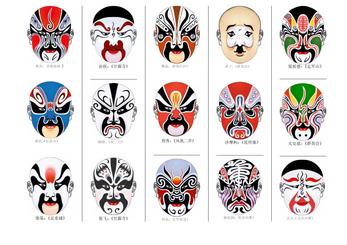The Birth of New Chinese Opera
After "MTay 4th" New Culture Movement, opera, a large integrated art form from Europe came to China with the incoming western culture, which also caught the concern and was used by Chinese composers. The children's singing and dancing opera created by Li Jinhui called Sparrow and Children and Small Artists enabled music education in schools in China in the early period to span from a single form of mainly singing, to a phase of co-existence of multiple art forms. He transplanted the form of western children singing and dancing opera by nationalizing and popularizing it, serving as an important reference to later music creation for singing and dancing and opera in China.
After the 1930s opera art in China drew on the xiqu forms of China since the Song and Yuan dynasties and the strength of western opera, gradually forming the “new opera” with Chinese styles. A number of excellent works appeared, such as Tide Tunes (composed by Ren Guang), Rural Tunes (by Xiang Yu), Zheng
Chenggong (composed by Zheng Zhisheng), Jingke (by Chen Tianhe), Song of Shanghai (composed by Zhang Hao), Song of the Earth (by Qian Renkang), Meng-Jiang Nii, The White-haired Girl (composed by Mark and Zhang Lu), and so on. The music of these operas attempt to integrate the features of western opera and national folk music of China, exploring the characteristics of opera music belonging to China, and then expressing the thoughts and feelings of the Chinese people through this art form of opera to reflect the life and struggle of the Chinese people.
After the 1940s, composers created operas such as The White-haired Girl, Chiye River, and Liu Hulan, on the basis of the experience in Yangge Opera at Yan An, laying a good foundation for forming Chinese opera art.
Yangge is a kind of folk singing and dancing with a long history popular in the vast countryside of northern China. In 1943 the spectacular "New Yangge" performance activities held in Yan An with the Luxun Art College as the main organizer, added a concrete character image on the basis of Yangge, making the form of new Yangge richer than old Yangge, and able to reflect the new life in the frontier area vividly. Therefore it was welcomed by the masses and was regarded by the central leaders. With the staging of the first New Yangge Opera Pioneering Brother and Sister to several Yangge Opera such as A Red Flower and Couple Improving Literacy, the whole nation set off a wave of composing and performing New Yangge Opera.
Most Yangge Opera integrated small-sized singing and dancing opera based on the "Small Stage Opera" of old Yangge, widely absorbing the elements of local folk songs, xiqu, and folk dancing,mainly reflecting the productions and struggles in the liberated areas and the actual life of the army and the people at that time.
In 1945 the first opera titled The White-haired Girl composed on the basis of New Yangge Movement opened up a new road for the development of Chinese opera, and became a classic work of the new opera of China. The White-haired Girl was composed by the Yan An Luxun Art Institute, and its music adopted the tunes of folk songs and xiqu in Hebei, Shanxi, and Shaanxi, plus adaptation and creation. The play not only creates the impressive characters of Xi'er and Yang Bailao, the song passages such as North Wind Blowing and Binding Red Hair Band became popular among the people. Because The White-haired Girl made great achievements in terms of ideology and art, it became the most popular opera with the greatest influence in the liberated area. It was performed in Yan An more than 30 times, and each time the venue was packed. The newspaper from the liberated era kept reporting the grand performance:"At each wonderful point, the applause is thunderous and lasting; at each sorrowful point, the audience sobbed, some people's eyes have tears from screen one to six... after the show, no person didn't praise it."
New drama created a new pattern of Chinese opera, which not only made a meaningful exploration in drawing on the strength of western opera and inheriting the traditional xiqu formula of China, but also accumulated experience in creating the characters in opera, and explored the fields music used in drama.
New drama provided successful experience to the development of Chinese opera. After the People's Republic of China was founded, with the establishment of professional troupes and performances staged in theaters, a series of revolutionary operas appeared, which are still performed today, such as The Marriage of Xiao Erhei, Liu Hulan, Song of the Prairie, Honghu Lake Brigade, Liu Sanjie, and Sister Jiangjie.
The 10 years of the "Cultural Revolution" put opera creation at a standstill. After the 1980s, with the reform and open-up going strong, opera composition in China also absorbed new thoughts, ideas and composing skills. The classic works of the 1980s are Sad about it the Past and Prairie, and after the 1990s, Marco Polo, King Chu Bawang, and Vast Prairie.



